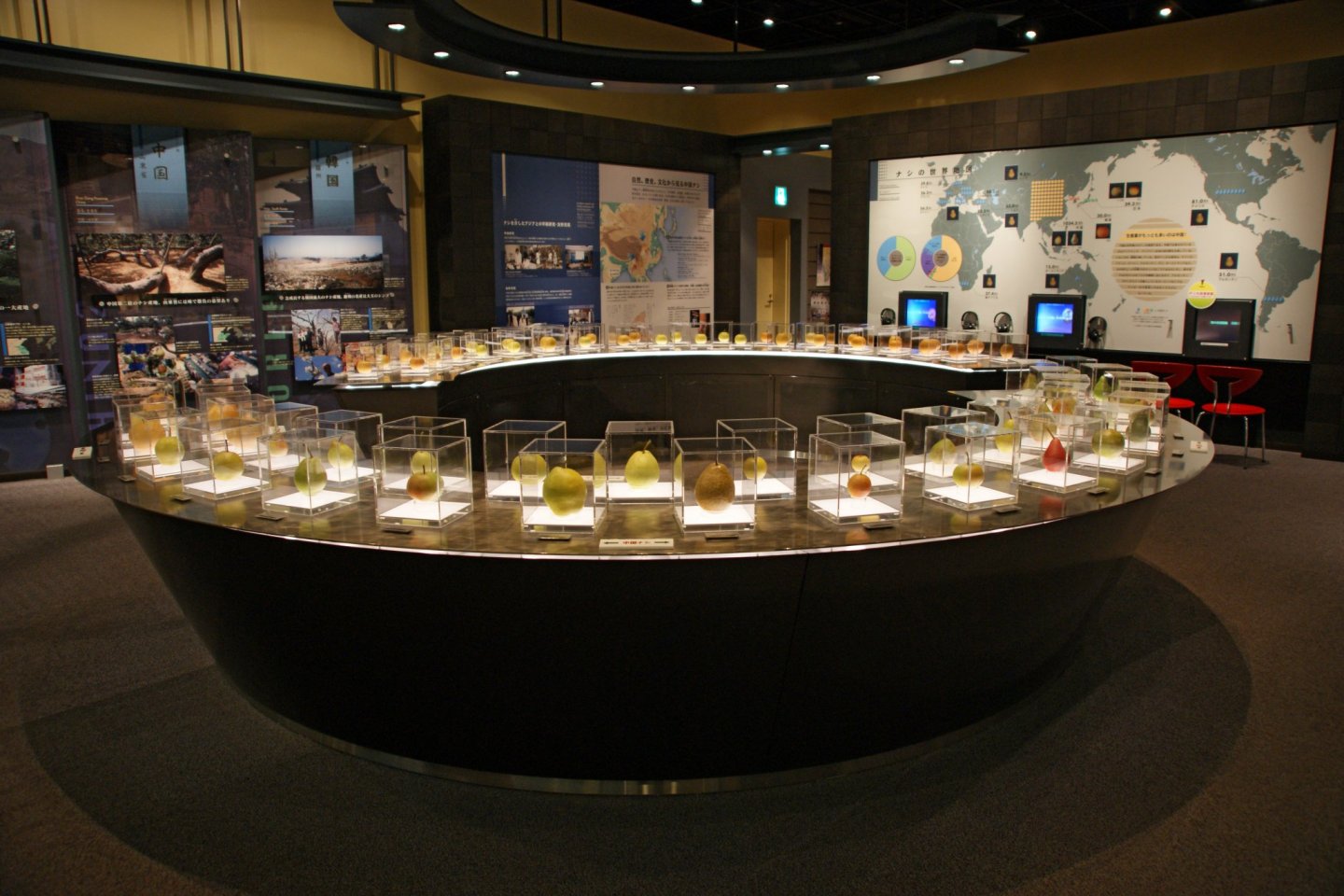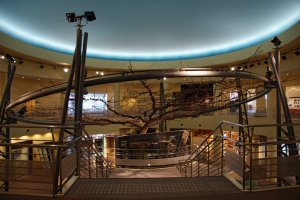Japan is known for having some very unique museums. One which definitely fits that description is the Tottori Nijisseiki Pear Museum, dedicated to the popular fruit which is cultivated in the prefecture. Spread out over two floors, the museum has a range of exhibits to educate yourself about all things pear-related.
Once you enter, it's impossible to miss the giant pear tree which acts as the symbol of the museum. The tree is 20 meters in diameter, and owns the title of being the largest pear tree in Japan during the 20th Century. The tree is so large, in fact, that it was able to harvest 4000 pears a year - compare that to an average tree which yields around 800 pears, and you can see why this one was so revered.
Another interesting exhibit is the section dedicated to pears of the world. There are around 70 types of pears on display from all corners of the globe, along with details of their production status in their respective countries.I was particularly interested to learn about Australian pear production - a large number of pears are actually harvested in Shepparton, a town I didn't live far from.
There are pear gardens on the museum grounds as well, and during the month of May they usually run a pear-picking experience. It's worth keeping an eye on the museum website for details about these hands-on events.
Once you've explored all of the displays, be sure to head to the on-site cafe where you'll find a range of pear-themed refreshments. The pear soft cream is one of the most popular menu items - it combines the zingy pear flavor with a smooth vanilla undertone.





























Japan never disappoints with it's museums about unlikely things. The Hotaruika Museum in Namerikawa still tops my list, but a pear museum comes pretty close :-)